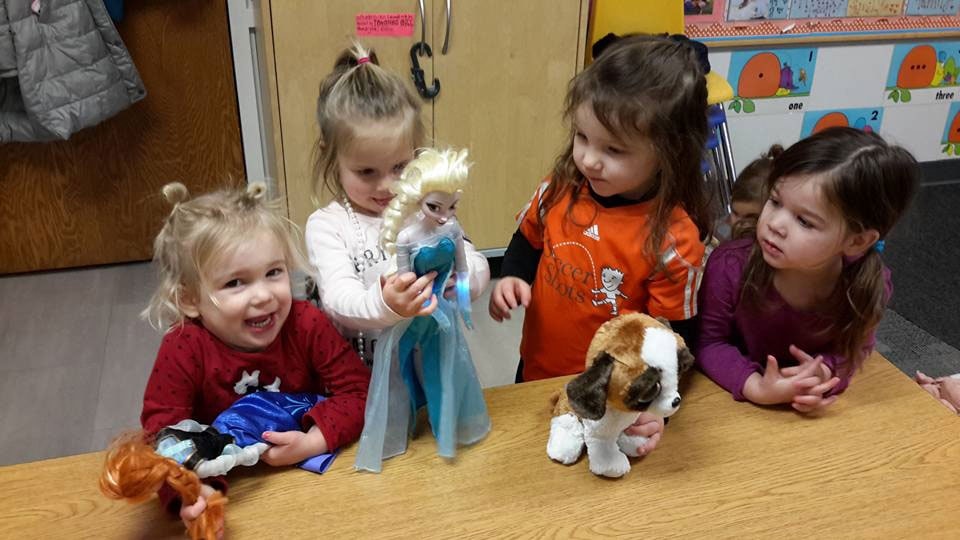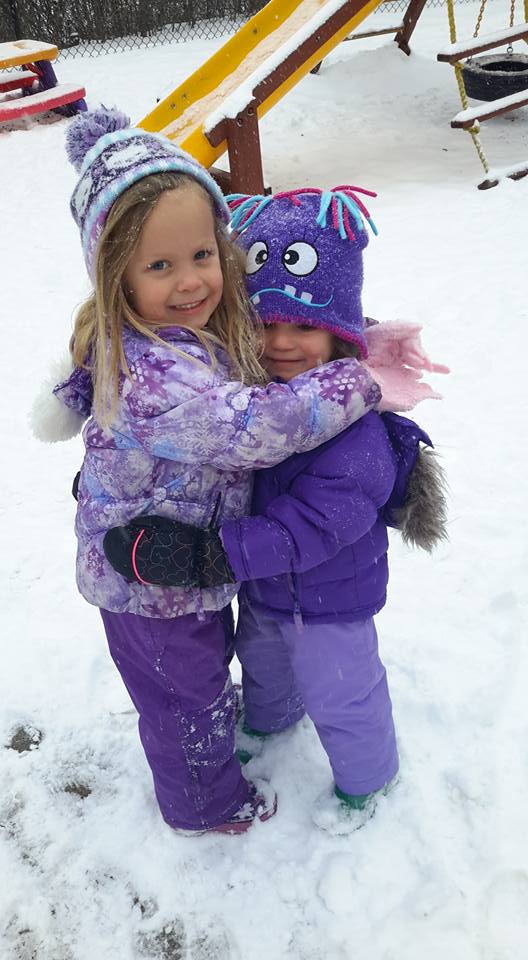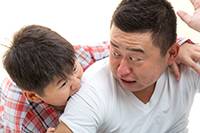Today’s Life Schools & Childcare is dedicated to delivering the best quality care and education for every child. Our curriculum for all age groups is built on solid child development principles. Explore our infant, toddler, preschooler, pre-kindergarten, Spanish language, summer fun and enrichment programs.
Category: News
Now Enrolling Toddlers & Preschool Age Children!
Now Enrolling Toddlers & Preschool Age Children! Great Care & Premium Education Starts Here. Best Eden Prairie Rates!
Today’s Life Schools & Childcare is devoted to providing the highest quality care and education for every child. Our curriculum for all age groups is built on enduring child development principles. Explore our infant, toddler, preschooler, pre-kindergarten, Spanish language, summer fun and enrichment programs.
Four Developmental Benefits of Dramatic Play
Four Developmental Benefits of Dramatic Play
According to experts, dramatic play is any type of play where “children assign and accept roles and act them out”. This means that whether your child likes to pretend to be a doctor or wants to be a mechanic working the big wheel, they’re engaging in dramatic play.
But dramatic play is about more than just play. In fact, there are four developmental benefits of pretend play, including:
- Intellectual – Dramatic play is known to help children solve problems, negotiate, organize and plan.
- Physical – Most play also increases motor development, strength and coordination (depending on the activity).
- Social – Social development means being able to share, take turns, cooperate, negotiate and handle disappointment when it happens.
- Emotional – Emotional developments might include feelings of protection, a sense of self and individually as well.
At Today’s Life Schools & Child Care, we focus on dramatic play, making our classrooms and facility a great location for your little one!
About St Patrick’s Day
Saint Patrick’s Day is celebrated each year on March 17th. In Ireland, St Patrick’s Day is both a holy day and a national holiday. Saint Patrick is a patron saint of Ireland as he was the one who brought Christianity to the Irish.
According to the legend, St Patrick used a shamrock to explain about God. The shamrock, which looks like a clover, has three leaves on each stem. Saint Patrick told the people that the shamrock was like the idea of the trinity, that in the one God there are three divine beings: the Father, the Son and the Holy Spirit. The shamrock was sacred to the druids, so St Patrick’s use of it in explaining the trinity was very wise.
Although it began in Ireland, St Patrick’s Day is celebrated in countries around the world. People with Irish heritage remind themselves of the beautiful green countryside of Ireland by wearing green and taking part in the festivities.
St Patrick’s Day is usually celebrated with a parade. The one in Dublin, Ireland is known to some as the Irish Mardi Gras. But the one in New York city is actually one of the biggest. It last for hours. Two Irish wolfhounds, the mascots of the New York National Guard Infantry regiment, always lead the parade. More than one hundred bands and a hundred thousand marchers follow the wolfhounds in the parade.
Saint Patrick and the Snakes:
Another tale about Patrick is that he drove the snakes from Ireland. Different versions of the story, tell of him standing upon a hill, using a wooden staff to drive the serpents into the sea, banishing them forever from Ireland.
One version says that an old serpent resisted banishment, but that Patrick outwitted it. Patrick made a box and invited the snake to enter. The snake insisted it was too small and the two argued. Finally to prove his point, the snake entered the box to show how tight the fit was. Patrick slammed the lid closed and threw the box into the sea.
Although it’s true that Ireland has no snakes, this likely had more to do with the fact that Ireland is an island and being separated from the rest of the continent the snakes couldn’t get there. The stories of Saint Patrick and the snakes are likely a metaphor for his bringing Christianity to Ireland and driving out the pagan religions (Serpents were a common symbol in many of these religions).
Sharing these fun stories with your children most always leaves them wonder.
5 Ages Of Brain Development
Throughout our life, starting at conception week 4, our brain continues to undergo growth and changes. Here are the 5 steps our brain develops into:
STAGE 1
By the time we take our first breath, the brain is already more than 8 months old. It starts to develop within four weeks of conception, when one of three layers of cells in the embryo rolls up to form the neural tube. A week later, the top of this tube bends over, creating the basic structure of fore, mid and hindbrain.
From this point, brain growth and differentiation is controlled mainly by the genes. Even so, the key to getting the best out of your brain at this stage is to have the best prenatal environment possible. In the early weeks of development, that means having a mother who is stress-free, eats well and stays away from cigarettes, alcohol and other toxins. Towards the end of the brain-building process, when the fetus becomes able to hear and remember, sounds and sensations also begin to shape the train.
In the first two trimesters of pregnancy, though, development is all about putting the basic building blocks in place: growing neurons and connections and making sure each section of the brain grows properly and in the right area. This takes energy, and a variety of nutrients in the right quantity at the right time.
STAGE 2
In childhood, the brain is the most energetic and flexible that it will ever be. As we explore the world around us it continues to grow, making and breaking connections at breakneck speed. Perhaps surprisingly, learning, memory and language begin before we are even born.
During the prenatal period, up to a quarter of a million new cells form every minute, making 1.8 million new connections per seconds, though about half of the cells will later wither and die, leaving only those reinforced by use. From birth, a child undergoes more than a decade of rapid growth and development, in which every experience contributes to the person they will become. So what can a parent do to help maximize the potential of their child’s brain? A nurturing environment and daily individualized communication. Negative and/or harsh treatment may come with emotional consequences in the future.
STAGE 3
Teenagers are selfish, reckless, irrational and irritable, but given the cacophony of construction going on inside the adolescent brain, is it any wonder? In the teenage years, our brain may be fully grown, but the wiring is certainly a work in progress.
Psychologists used to explain the particularly unpleasant characteristics of adolescence as products of raging sex hormones, since children reach near adult cerebral volumes well before puberty. More recently, though, imaging studies have revealed a gamut of structural changes in the teens and early 20s that go a long way towards explaining these tumultuous teenage years.
Jay Giedd at the National Institute of Mental Health in Bethesda, Maryland, and his colleagues have followed the progress of nearly 400 children, scanning many of them every two years as they grew up. They found that adolescence brings waves of grey-matter pruning, with teens losing about 1 percent of their grey matter every year until their early 20s.
This cerebral pruning trims unused neural connections that were overproduced in the childhood growth spurt, starting with the more basic sensory and motor areas. These mature first, followed by regions involved in language and spatial orientation and lastly those involved in higher processing and executive functions.
STAGE 4
So you’re in your early 20s and your brain has finally reached adulthood. Enjoy it while it lasts. The peak of your brain’s powers comes at around age 22 and lasts for just half a decade. From there it’s downhill all the way.
This long, slow decline begins at about 27 and runs throughout adulthood, although different abilities decline at different rates. Curiously, the ones that start to go first – those involved with executive control, such as planning and task coordination – are the ones that took the longest to appear during your teens. These abilities are associated with the prefrontal and temporal cortices, which are still maturing well into your early 20s.
Episodic memory, which is involved in recalling events, also declines rapidly, while the brain’s processing speed slows down and working memory is able to store less information.
So just how fast is the decline? According to research, from our mid-20s we lose up to 1 point per decade on a test called the mini mental state examination. This is a 30-point test of arithmetic, language and basic motor skills that is typically used to assess how fast people with dementia are declining. A 3 to 4 point drop is considered clinically significant. In other words, the decline people typically experience between 25 and 65 has real-world consequences.
STAGE 5
By the time you retire, there’s no doubt about it, your brain isn’t what it used to be. By 65 most people will start to notice the signs: you forget people’s names and the teapot occasionally turns up in the fridge.
There is a good reason why our memories start to let us down. At this stage of our life we are steadily losing brain cells in critical areas such as the hippocampus – the area where memories are processed. This is not too much of a problem at first, even in old age the brain is flexible enough to compensate. At some point though, the losses start to make themselves felt.
Clearly not everyone ages the same way, so what’s the difference between jolly, intelligent oldie and a forgetful, grumpy granny? And can we improve our chances of becoming the former?
Exercise can certainly help. Numerous studies have shown that gentle exercise three times a week can improve concentration and abstract reasoning in older people, perhaps by stimulating the growth of new brain cells. Exercise also helps steady our blood glucose. As we age, our glucose regulation worsens, which causes spikes in blood sugar. This can affect the dentate gyrus, an area within the hippocampus that helps form memories. Since physical activity helps regulate glucose, getting out and about could reduce these peaks and, potentially, improve your memory.
Stay healthy!
Cold Weather Rules & Tips
Whether winter brings severe storms, light dust or just cold temperatures, the American Academy of Pediatrics has some valuable tips on how to keep your children safe and warm. We follow most of them here at Today’s Life, most of them I say because children will never be going outside in temperatures under 15/20 degrees here at the center and at those temperatures; children would not spend more than 10/15 minutes outside. But read below and see what you can get out of it:
What to Wear
- Dress infants and children warmly for outdoor activities. Several thin layers will keep them dry and warm. Don’t forget warm boots, gloves or mittens, and a hat. Choose boots that are large enough to comfortably accommodate two pairs of socks.
- Remove drawstrings from clothing which may get caught on tree branches or play equipment. Replace with Velcro.
- The rules of thumb for older babies and young children are to dress them in one more layer of clothing than an adult would wear in the same conditions.
- When riding in the car, babies and children should wear thin, snug layers rather than thick, bulky coats or snowsuits.
- Blankets, quilts, pillows, bumpers, sheepskins and other loose bedding should be kept out of an infant’s sleeping environment, which we follow here at Today’s Life, because they are associated with suffocation deaths and may contribute to Sudden Infant Death Syndrome (SIDS). It is better to use sleep clothing like one-piece sleepers or wearable blankets is preferred.
- If a blanket must be used to keep a sleeping infant warm, it should be thin and tucked under the crib mattress, reaching only as far as the baby’s chest, so the infant’s face is less likely to become covered by bedding materials.
Hypothermia
- Hypothermia develops when a child’s temperature falls below normal due to exposure to colder temperatures. It often happens when a youngster is playing outdoors in extremely cold weather without proper clothing or when clothes get wet. It can occur more quickly in children than adults.
- As hypothermia sets in, the child may shiver and become lethargic and clumsy. Speech may become slurred and body temperature will decline in more severe cases.
- If you suspect your child is hypothermic, call 911 at once. Until help arrives, take the child indoors, remove any wet clothing, and wrap him/her in blankets or warm clothes.
Frostbite
- Frostbite happens when the skin outer tissues become frozen. This condition tends to happen on extremities like the fingers, toes, ears and nose. Skin first becomes red and tingly, then gray and painful and finally white, cold and hard without pain. Blistering occurs after the skin thaws.
- Playing in temperatures or wind chills below -15 degrees Fahrenheit should be avoided because exposed skin begins to freeze within minutes.
- Prevent frostbite by dressing in layers, covering all body parts when outside in cold weather. Bring children indoors if clothing gets wet.
- If frostbite occurs, bring the child indoors and place the frostbitten parts of her body in warm (not hot) water. 104 degrees Fahrenheit (about the temperatures of most hot tubs) is recommended. Warm washcloths may be applied to frostbitten nose, ears and lips.
- Administer acetaminophen or ibuprofen (consult your doctor or pharmacist on dosage) when you begin rewarming because as the skin thaws pain occurs.
- Do not rub the frozen areas.
- After a few minutes, dry and cover the child with clothing or blankets. Give him/her something warm to drink and seek medical attention immediately particularly if blistering occurs
Winter Health
- If your child suffers from winter nosebleeds, try using a cold air humidifier in the child’s room at night. Saline nose drops or petrolatum jelly may help keep nasal tissues moist. If bleeding is severe or recurrent, consult your pediatrician.
- Many pediatricians feel that bathing two or three times a week is enough for an infant’s first year. More frequent baths may dry out the skin, especially during the winter.
- Cold weather does not cause colds or flu. But the viruses that cause colds and flu tend to be more common in the winter, when children are in school and are in closer contact with each other. Frequent hand washing and teaching your child to sneeze or cough into the bend of her elbow may help reduce the spread of colds and flu.
- Children 6 months of age and up should get the influenza vaccine to reduce their risk of catching the flu. Around 80% of all influenza illness generally occurs in January, February, and March.
Winter Sports and Activities
- Set reasonable limits on outdoor play to prevent hypothermia and frostbite and make sure kids have a place to go warm up when they get cold. When weather is severe, have children come inside periodically to warm up.
- Alcohol or drug use should not be permitted in any situation. They can be even more dangerous in winter activities like snowmobiling or skiing.
A few tips that we hope will help and answered some of your questions.
Now Hiring!
Today’s Life Learning Center in Eden Prairie has a few job positions available. Current openings include; an infant teacher assistant, a qualified infant teacher and a qualified pre-K teacher. We are looking for upbeat, positive, friendly, dedicated, and responsible staff who love working with children. We offer competitive wages and benefits. If you or anyone you know are seeking a job in childcare please apply online at this site or call us at 952-358-2020.
Memorial Day With Kids
Celebrate Memorial Day with kids with these activities, printables, and resources honoring those who have sacrificed their lives for America’s freedom.
- 12 Essential Camping Supplies
- Top 10 Backyard Party Games for All Ages
- Top 10 Camping Foods and Recipes
- 10 Simple Ways to Support Our Troops
- Patriotic Craft Activities for Kids
- Sensational Summer Salads
- Skewer It! 12 Kebab Recipes for the Grill
- 10 Deliciously Different Chicken Recipes for the Grill
- Color the American Flag
- Sizzling Summer Grilling Recipes
- 15 Sweet No-Bake Summertime Desserts
- 12 Classic Summertime Picnic Recipes
- 11 Meat-Free Recipes for the Grill
- 6 Succulent Burger Recipes for the Grill
- Memorial Day: Exercises
- Observing Memorial Day
- Frozen Flowers
- Memorial Day Word Fill-In
- All About Memorial Day
- Memorial Day Quiz
Have a Fun, Great and Safe Memorial Weekend!
For more info, visit: http://fun.familyeducation.com/memorial-day/holidays/33548.html
Now Hiring! Infant Teacher: Full-Time
We are currently hiring for an infant teacher ( For our newborns thru 8 months) to join our team as enrollment has reached full potential.
Roles and Responsibilities:
– Responsible in teaching in the daily planning and implementation of the Today’s Life balanced curriculum while keeping the room structured
– Ensure that children are actively engaged in a safe, clean, controlled, stimulating and organized environment
– Actively develop and maintain positive relationships with families, children and co-workers
– Adherence to MN Licensing rules and regulations
– Knowledge of the social, emotional, intellectual and creative needs of the children
– Ability to provide the highest quality of Early Childhood Education while following Developmentally Appropriate Practice at all times
Requirements or Qualifications :
– Must meet the requirements for qualified Teacher as outlined by MN Licensing Department Rule 9503: qualified 24 quarter credits or AA/AS degree or Early Childhood Certification or CDA
– Have a passion for children and education
– Ability to be flexible in work assignments and hours if and when needed
– Stability in past employment
– Previous experience as a lead teacher helpful
– Clean, articulate and well maintained professional appearance
– Ability to lift up to 30 lbs
We offer benefits.
Fill out application online, call or email
Local candidates only.
Welcome Back To School 2015
Back-to-School Transitions: Tips for Parents
Getting a new school year off to a good start can influence children’s attitude, confidence, and performance both socially and academically. The transition from August to September can be difficult for both children and parents. Children starting a new school or even children who are eager to return to class must adjust to the greater levels of activity, structure, and, for some, pressures associated with school life.
The degree of adjustment depends on the child, but parents can help their children (and the rest of the family) manage the increased pace of life by planning ahead, being realistic, and maintaining a positive attitude. Here are a few suggestions to help ease the transition and promote a successful school experience.
Before School Starts
Good physical and mental health. Be sure your child is in good physical and mental health. Schedule doctor and dental checkups early. Discuss any concerns you have over your child’s emotional or psychological development with your pediatrician. Your doctor can help determine if your concerns are normal, age-appropriate issues or require further assessment. Your child will benefit if you can identify and begin addressing a potential issue before school starts. Schools appreciate the efforts of parents to remedy problems as soon as they are recognized.
Review all of the information. Review the material sent by the school as soon as it arrives. These packets include important information about your child’s teacher, room number, school supply requirements, sign ups for after-school sports and activities, school calendar dates, bus transportation, health and emergency forms, and volunteer opportunities.
Mark your calendar. Make a note of important dates, especially back-to-school nights. This is especially important if you have children in more than one school and need to juggle obligations. Arrange for a babysitter now, if necessary.
Make copies. Make copies of all your child’s health and emergency information for reference. Health forms are typically good for more than a year and can be used again for camps, extracurricular activities, and the following school year.
Buy school supplies early. Try to get the supplies as early as possible and fill the backpacks a week or two before school starts. Older children can help do this, but make sure they use a checklist that you can review. Some teachers require specific supplies, so save receipts for items that you may need to return later.
Re-establish the bedtime and mealtime routines. Plan to re-establish the bedtime and mealtime routines (especially breakfast) at least 1 week before school starts. Prepare your child for this change by talking with your child about the benefits of school routines in terms of not becoming over tired or overwhelmed by school work and activities. Include pre-bedtime reading and household chores if these were suspended during the summer.
Turn off the TV. Encourage your child to play quiet games, do puzzles, flash cards, color, or read as early morning activities instead of watching television. This will help ease your child into the learning process and school routine. If possible, maintain this practice throughout the school year. Television is distracting for many children, and your child will arrive at school better prepared to learn each morning if he or she has engaged in less passive activities.
Visit school with your child. If your child is young or in a new school, visit the school with your child. Meeting the teacher, locating their classroom, locker, lunchroom, etc., will help ease pre-school anxieties and also allow your child to ask questions about the new environment. Call ahead to make sure the teachers will be available to introduce themselves to your child.
Minimize clothes shopping woes. Buy only the essentials. Summer clothes are usually fine during the early fall, but be sure to have at least one pair of sturdy shoes. Check with your school to confirm dress code guidelines. Common concerns include extremely short skirts and shorts, low rise pants, bare midriffs, spaghetti strap or halter tops, exposed undergarments, and clothing that have antisocial messages.
Designate and clear a place to do homework. Older children should have the option of studying in their room or a quiet area of the house. Younger children usually need an area set aside in the family room or kitchen to facilitate adult monitoring, supervision, and encouragement.
Select a spot to keep backpacks and lunch boxes. Designate a spot for your children to place their school belongings as well as a place to put important notices and information sent home for you to see. Explain that emptying their backpack each evening is part of their responsibility, even for young children.
Freeze a few easy dinners. It will be much easier on you if you have dinner prepared so that meal preparation will not add to household tensions during the first week of school.
The First Week
Clear your own schedule. To the extent possible, postpone business trips, volunteer meetings, and extra projects. You want to be free to help your child acclimate to the school routine and overcome the confusion or anxiety that many children experience at the start of a new school year.
Make lunches the night before school. Older children should help or make their own. Give them the option to buy lunch in school if they prefer and finances permit.
Set alarm clocks. Have school-age children set their own alarm clocks to get up in the morning. Praise them for prompt response to morning schedules and bus pickups.
Leave plenty of extra time. Make sure your child has plenty of time to get up, eat breakfast, and get to school. For very young children taking the bus, pin to their shirt or backpack an index card with pertinent information, including their teacher’s name and bus number, as well as your daytime contact information.
After school. Review with your child what to do if he or she gets home after school and you are not there. Be very specific, particularly with young children. Put a note card in their backpack with the name(s) and number(s) of a neighbor who is home during the day as well as a number where you can be reached. If you have not already done so, have your child meet neighbor contacts to reaffirm the backup support personally.
Review your child’s schoolbooks. Talk about what your child will be learning during the year. Share your enthusiasm for the subjects and your confidence in your child’s ability to master the content. Reinforce the natural progression of the learning process that occurs over the school year. Learning skills take time and repetition. Encourage your child to be patient, attentive, and positive.
Send a brief note to your child’s teacher. Let the teachers know that you are interested in getting regular feedback on how and what your child is doing in school. Be sure to attend back-to-school night and introduce yourself to the teachers. Find out how they like to communicate with parents (e.g., through notes, e-mail, or phone calls). Convey a sincere desire to be a partner with your children’s teachers to enhance their learning experience.
Familiarize yourself with the other school professionals. Make an effort to find out who it is in the school or district who can be a resource for you and your child. Learn their roles and how best to access their help if you need them. This can include the principal and front office personnel; school psychologist, counselor, and social worker; the reading specialist, speech therapist, and school nurse; and the after-school activities coordinator.
Overcoming Anxiety
Let your children know you care. If your child is anxious about school, send personal notes in the lunch box or book bag. Reinforce the ability to cope. Children absorb their parent’s anxiety, so model optimism and confidence for your child. Let your child know that it is natural to be a little nervous anytime you start something new but that your child will be just fine once he or she becomes familiar with classmates, the teacher, and school routine.
Do not overreact. If the first few days are a little rough, try not to over react. Young children in particular may experience separation anxiety or shyness initially but teachers are trained to help them adjust. If you drop them off, try not to linger. Reassure them that you love them, will think of them during the day, and will be back.
Remain calm and positive. Acknowledge anxiety over a bad experience the previous year. Children who had a difficult time academically or socially or were teased or bullied may be more fearful or reluctant to return to school. If you have not yet done so, share your child’s concern with the school and confirm that the problem has been addressed. Reassure your child that the problem will not occur again in the new school year, and that you and the school are working together to prevent further issues.
Reinforce your child’s ability to cope. Give your child a few strategies to manage a difficult situation on his or her own. But encourage your child to tell you or the teacher if the problem persists. Maintain open lines of communication with the school.
Arrange play dates. Try to arrange get-togethers with some of your child’s classmates before school starts and during the first weeks of schools to help your child re-establish positive social relationships with peers.
Plan to volunteer in the classroom. If possible, plan to volunteer in the classroom at least periodically throughout the year. Doing so helps your child understand that school and family life are linked and that you care about the learning experience. Being in the classroom is also a good way to develop a relationship with your child’s teachers and classmates, and to get firsthand exposure to the classroom environment and routine. Most teachers welcome occasional parent help, even if you cannot volunteer regularly.
Extracurricular Activities
Go for quality, not quantity. Your child will benefit most from one or two activities that are fun, reinforce social development, and teach new skills. Too much scheduled time can be stressful, especially for young children, and may make it harder to concentrate on schoolwork. When evaluating extracurricular activities, consider your family schedule and personal energy level. Multiple activities per child may be too much to manage, particularly if the activities have overlapping times, disparate locations, require your attendance, or disrupt the dinner hour.
Select activities where you have someone with whom you can carpool. Even if you are available to drive most days, you will need backup sometimes. Choosing activities that occur on-site after school will also minimize driving.
Find out from the school or teacher which days will be heavy homework or test study days and schedule extracurricular activities accordingly.
If your child does not want to participate in regular, organized extracurricular activities, you may want to consider other options to help build interests and social skills. For example, check out the local library for monthly reading programs, find out if your local recreation or community center offers drop-in activities, or talk to other parents and schedule regular play dates with their children.
When Problems Arise
These recommendations can contribute to a positive and productive school experience for most children. Some children may exhibit more extreme opposition to or fear of school or may be coping with more specific learning or psychological difficulties.
If your child demonstrates problems that seem extreme in nature or go on for an extended period, you may want to contact the school to set up an appointment to meet with your child’s teachers and school psychologist. They may be able to offer direct or indirect support that will help identify and reduce the presenting problem. They may also suggest other resources within the school and the community to help you address the situation.
While children can display a variety of behaviors, it is generally wise not to over-interpret those behaviors. More often than not, time and a few intervention strategies will remedy the problem. Most children are wonderfully resilient and, with your support and encouragement, will thrive throughout their school experience.
Resources
Clark, L. (1996). SOS: Help for parents (2nd ed.). Berkley, CA: Parents’ Press. ISBN: 0935111204.
Dawson, M. P. (2004). Homework: A guide for parents. In A. Canter, L. Paige, M. Roth, I. Romero, & S. Carroll (Eds.), Helping children at home and school II: Handouts for families and educators. Bethesda, MD: National Association of School Psychologists.
Rimm, S. (1996). Dr. Sylvia Rimm’s smart parenting: How to raise a happy, achieving child. New York: Crown. ASIN: 0517700638.
Websites
National Association of School Psychologists— www.nasponline.org
Parent Information Center — www.parentinformationcenter.org
Ted Feinberg, EdD, NCSP, served upstate New York schools as a school psychologist for more than 30 years and currently is an Assistant Executive Director of the National Association of School Psychologists. Katherine C. Cowan is Director of Marketing and Communications for NASP. This material is adapted from their article posted previously on the NASP and Teachers First (NITV, Inc.) websites.
© 2004 National Association of School Psychologists, 4340 East West Highway, Suite 402, Bethesda, MD 20814—(301) 657-0270.
Today’s Life School & Childcare Voted 2015 Best Eden Prairie Summer Camp
FOR IMMEDIATE RELEASE
Today’s Life of Eden Prairie Receives 2015 Best of Eden Prairie Summer Camp Award
Eden Prairie Award Program Honors the Achievement
EDEN PRAIRIE June 22, 2015 — Today’s Life of Eden Prairie has been selected for the 2015 Best of Eden Prairie Award in the Summer Camps category by the Eden Prairie Award Program.
Each year, the Eden Prairie Award Program identifies companies that we believe have achieved exceptional marketing success in their local community and business category. These are local companies that enhance the positive image of small business through service to their customers and our community. These exceptional companies help make the Eden Prairie area a great place to live, work and play.
Various sources of information were gathered and analyzed to choose the winners in each category. The 2015 Eden Prairie Award Program focuses on quality, not quantity. Winners are determined based on the information gathered both internally by the Eden Prairie Award Program and data provided by third parties.
About Eden Prairie Award Program
The Eden Prairie Award Program is an annual awards program honoring the achievements and accomplishments of local businesses throughout the Eden Prairie area. Recognition is given to those companies that have shown the ability to use their best practices and implemented programs to generate competitive advantages and long-term value.
The Eden Prairie Award Program was established to recognize the best of local businesses in our community. Our organization works exclusively with local business owners, trade groups, professional associations and other business advertising and marketing groups. Our mission is to recognize the small business community’s contributions to the U.S. economy.
SOURCE: Eden Prairie Award Program
CONTACT:
Eden Prairie Award Program
Email: PublicRelations@awardcontact.org
URL: http://www.awardcontact.org
Play in Preschool: Why it Matters
Parents often hear of the importance of play in preschool. But playing with dolls and blocks seems to have little to do with the academic knowledge that children will need to succeed in kindergarten. So why is it so important?
Play is the foundation for all learning for young children, and giving your child the time and a few basic toys can provide her with a variety of valuable learning opportunities. “Play is how children begin to understand and process their world,” says Angie Rupan, Program Coordinator for Child Development Center in South San Francisco, CA and early childhood educator for over 20 years. “Children’s play unlocks their creativity and imagination, and develops reading, thinking, and problem solving skills as well as further develops motor skills. It provides the base foundation for learning.”
Why is play so important and what do preschoolers learn when they play? Try a few of these simple ideas with items you have around your house and learn about the educational benefits that each can provide for your child.
Language and Vocabulary Development
When playing with other children or adults, vocabulary and language skills are fostered. Your child will listen and learn the language she hears without even realizing. Children will learn to use language to communicate meaning as well as picking up new words and hearing the grammatical structure of the English language.
- Vehicles and Animals. Playing with cars, trucks and trains as well as animals provides for many new vocabulary words as children learn the names of each, what they do, what they eat or where you can find them. Additionally, children and adults can create all kinds of scenarios that the vehicles or animals might find themselves in, providing for further language and vocabulary development.
- Dollhouse and Dolls. Playing with a dollhouse or dolls allows your child to reenact what happens in her everyday life, using the words and phrases she hears. You are likely to hear your own words come out of her mouth as she recreates events that have happened, perhaps with an outcome more suited to her liking.
Imagination and Creativity
In our fast paced and high tech society, children have fewer and fewer opportunities to use and develop their creativity. Children who are not given frequent opportunities to play may have a difficult time entertaining themselves as they simply do not know what to do without instruction. By providing opportunities for open ended play, your child will automatically get her creative juices flowing, and the possibilities are endless.
- Dramatic Play. provide a few props such as dishes and play food, empty food boxes and a cash register or stuffed animals and a doctor’s kit, and your child will be transported into a different place! Watch and be amazed at what she will come up with as she plays.
- Craft Supplies. Without a specific project complete, provide your child with a variety of craft supplies such as markers and crayons, scraps of fabric or paper, empty boxes or containers, glue, buttons and stickers. Allow her to create anything she likes and watch her inner artist emerge!
Problem Solving and Mathematics
Children can solve complex problems that arise as they play and learn a few mathematical principals as well. Blocks and puzzles are excellent “basics” to provide your child with many opportunities to foster these important skills.
- Blocks. Playing with blocks provides for many problem solving scenarios. How can we make it balance? How tall can we make this tower? Can we build a castle? Children also learn some basic math concepts with the various shapes and sizes of the blocks.
- Puzzles. When trying to make puzzle pieces fit, children are gaining important math and problem solving experience. Learning a bit about sizes (is the piece too big for that spot?) and shapes (does the shape of the piece look the same as the hole?) You can encourage this learning by engaging in conversations as your child plays. Your child will also gain an important sense of accomplishment as her practice leads to a completed puzzle in the end.
Gross and Fine Motor Development
Gross motor skills involve the large muscles of the legs and arms while fine motor development is building the muscles of the hands that will be used for writing. Play can provide many opportunities to work on strengthening these muscles without your child even being aware of it!
- Stringing Beads and Lacing. Giving children beads and plastic tipped laces provide a fun way to work on fine muscle control. Your child can create a beautiful necklace while strengthening the fine motor muscles. Lacing cards or child safe needles and burlap will also provide fun “sewing” projects for young children.
- Balls and Balance Beams. Kicking balls and walking on balance beams can help your child become more coordinated. Get outside and kick a ball around, create a goal area to make it a game. Anytime you see a narrow brick wall or wooden plank, give your child some assisted practice at balancing.
Gather up the toys you have around the house and make it a point to provide ample time for play. Playing around with your child is sure to provide many wonderful childhood memories and reap some great educational benefits as well!
To learn more: http://www.education.com/magazine/article/play-preschool-matters/
Biting At a Childcare Center
Why do some children bite while others don’t? There are a number of possible reasons why children under age 3 bite, almost none of them the fault of a child behavior problem, bad parents, or bad caregivers. Sometimes we think we have a good idea what is causing the biting, but most of the time it is hard to guess what is going on in the child’s head.
Common Reasons Why Kids Start Biting
• Teething. When teeth are coming through, applying pressure to the gums is comforting, and infants will use anything available to bite. Obviously, if this is a likely cause, then teething remedies like a ring or objects to bite will lessen the infant’s need to bite other people.
• Excitement and over-stimulation. When some very young children are very excited, even happily so, they may behave in an out-of-control fashion. For instance, a little 16-month-old girl Natasha loved moving to music. After a session with music and scarves and everyone twirling and enjoying themselves, it was very predictable that Natasha would bite someone if an adult did not help her calm down.
• Impulsiveness and lack of self-control. Infants sometimes bite because there is something there to bite. This biting is not intentional in any way, but just a way of exploring the world.
• Making an impact. Young children like to make things happen, and the reaction when someone is bitten is usually pretty dramatic.
• Frustration. Too many challenges, too many demands, too many wants, too little space, and too many obstacles may lead a child to bite, especially before they have the capability to express frustration through using language. Tips to Minimize Kids Biting at Child Care Teachers in child care are trained to do the following to try to minimize the biting behavior, which parents can also try at home:
• Let the child know in words and manner that biting is unacceptable. Adults’ most stern manner and words should be reserved for acts such as biting.
• Remove the biting child from the situation and focus caring attention on the victim.
• Examine the context in which the biting occurred and look for patterns. Was it crowded? Too few toys? Too little to do? Too much waiting? Is the biting child getting the attention and care he/she deserves at all times?
• Change the environment, routines, or activities if necessary.
• Work with the biting child on resolving conflict or frustration in a more appropriate manner, including using words if the child is capable.
• Observe a child who is a short-term chronic biter to get an idea about when he or she is likely to bite. Some children, for example, may bite not when they are angry or frustrated, but when they are very excited.
• Identify children likely to be bitten and make special efforts to reduce their chance of becoming victims. • Don’t casually attribute willfulness or maliciousness. Infants explore anything that interests them with the mouth, and that includes other bodies.
• If biting continues, continue to observe the group closely. Apply additional resources as necessary to shadow the child.
What can a parent do if their child begins to bite?
Removing significant stresses on the child at home, such as a demanding a schedule or difficult transitions, will make it easier for a child to handle times of stress that do arise. If the child bites other children in your presence, take the same steps suggested above immediately after the biting occurs and look for ways to adapt the environment to prevent biting in the future. If the child is biting at daycare, there is very little you can do other than keep in close communication with the child’s teachers. Fortunately, biting is a stage that passes.
What to do if your child is bitten?
There’s not much worse than seeing a bite mark on your child, and worse, infant and toddler bites are often on the face. All of our parental primal instincts as our child’s protector come into play. It is natural to be upset. But try and keep in mind that it is a consequence of the group situation and not really the fault of the child, the family, or the program. Your child might as easily have been the biter. Bright Horizons centers don’t release the name of the biting child for that reason.
How long do child care centers stick with a biting child?
Good child care centers work very hard to make the program work for every child, and take extraordinary measures to help a child overcome the “biting habit.” Sometimes it feels to parents (and occasionally staff) that too much time passes before a child is disenrolled.Occasionally they might be right. But there is no clear line to indicate when program adaptations have failed to meet the child’s needs and the family needs to find another child care arrangement.
The good news is that all biting children grow out of it, most often in their twos. This happens to the great relief of all: the biting child, the other children and their parents, the staff, and most of all, the biting child’s family.
Monthly MVNA Nurse Visits
Every month Today’s Life Schools and Childcare welcome a visit from the MVNA. Recently a nurse from this organization visited with our management and staff about playground safety. Each month the topic is different and always focuses on the well being of our kids.
The MVNA is a nurse-led non-profit public health organization. The MVNA has faithfully served the health care needs of the community for more than a century. You can learn more about them at their website http://www.mvna.org/. They are truly a wonderful asset to the communities they serve.










